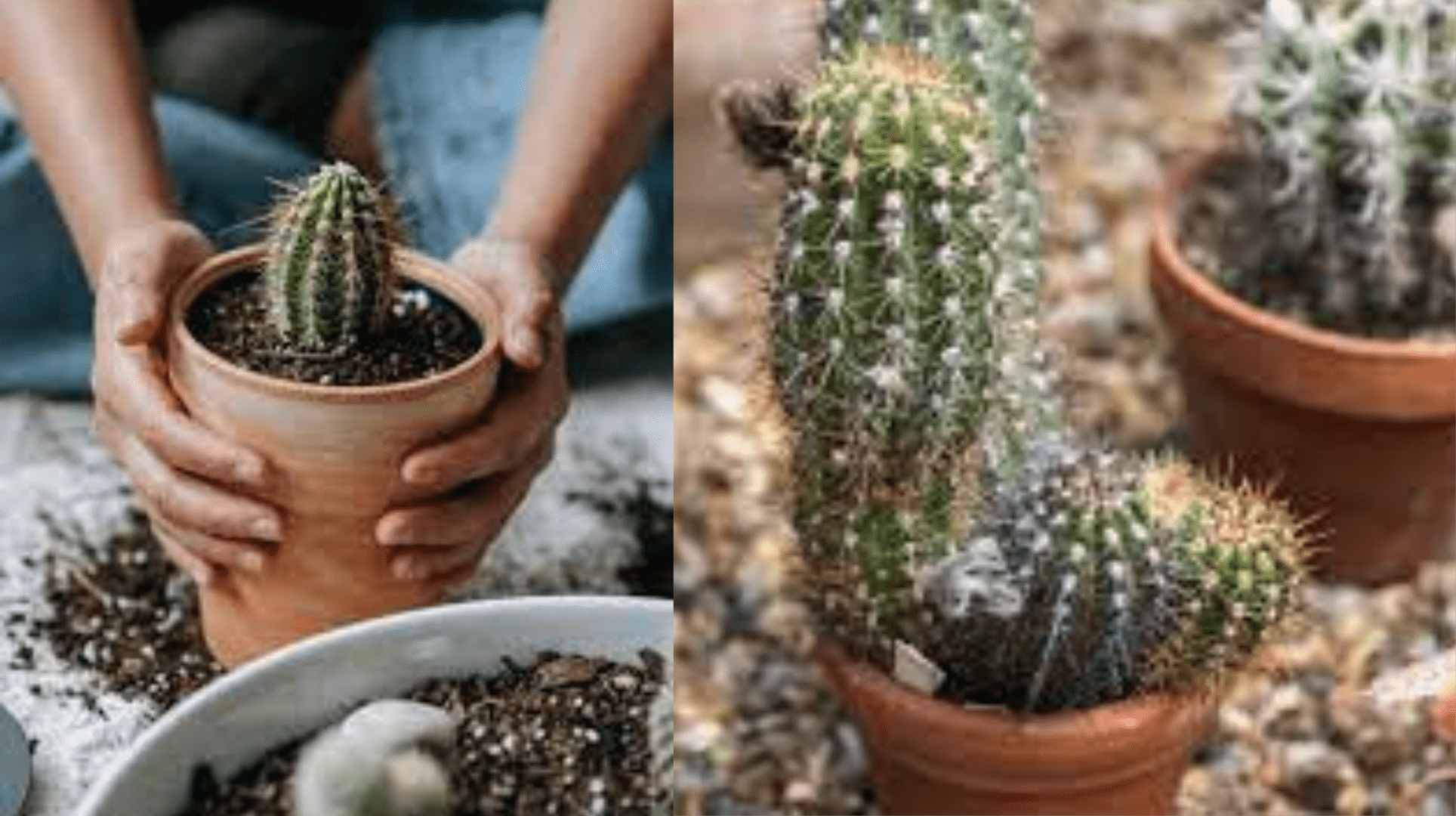Transplanting a cactus can be a delicate process, as these plants have specific needs and can be easily damaged. However, with the right preparation and care, it is possible to successfully transplant a cactus to a new location. Before transplanting, it is important to choose a suitable location with well-draining soil and plenty of sunlight.
Additionally, it is best to transplant cacti during their dormant period, typically in the fall or early spring, to minimize stress on the plant. When transplanting, carefully remove the cactus from its current pot, being sure to loosen any roots that may be bound. Gently place the cactus in its new location, and backfill it with soil. Water the cactus well, but be careful not to overwater as this can lead to root rot.
Finally, be sure to protect the cactus from direct sunlight for a few days, and then gradually introduce it to the full sun over the course of a week. With proper care and attention, your cactus should adjust well to its new home.
What You’ll Need tools

When transplanting a cactus, you will need a few tools to help you safely and effectively move the plant to its new home. Some of the tools you may need include:
- A sharp & clean knife: This will be used to carefully cut away any damaged or diseased roots before transplanting.
- A pot or container: Choose a container that is slightly larger than the current one, and that has drainage holes to allow excess water to escape.
- Soil: Use a well-draining cactus or succulent soil mix that will provide proper drainage and aeration for the cactus roots.
- A small hand trowel: This will be used to dig up the cactus from its current pot or container and to backfill the new container with soil.
- A watering can: Water is not needed for the first week after transplanting, but you will need a way to water the cactus once it is in its new container.
- A pair of gloves: Cacti have spines or needles, so it’s recommended to wear gloves to protect yourself during the transplanting process.
- A sheet or towel to lay on the ground: To put the cactus on it while working on it, it will help to prevent it from moving around.
- A wheelbarrow or cart: to move the cactus from one location to another if the cactus is too heavy or large to move by hand.
Safely Cactus Transplant Instructions

Transplanting a cactus can be a tricky process, but with the proper preparation and care, it can be done safely and successfully. Here are some instructions on how to safely transplant a cactus:
- Choose the right time: The best time to transplant cacti is during the dormant period, which is typically in the late fall or early spring. This allows the cactus to recover from the shock of transplanting before the hot summer months.
- Prepare the new container: Choose a container that is slightly larger than the current one, and that has drainage holes to allow excess water to escape. Fill the bottom of the container with gravel or small rocks to improve drainage.
- Carefully remove the cactus: Use a sharp, clean knife or pair of scissors to cut away any damaged or diseased roots before transplanting. Gently shake off any excess soil and inspect the roots for any damage.
- Transplant the cactus: Place the cactus in its new container and backfill it with soil. Make sure to press the soil firmly around the base of the cactus to secure it in place.
- Watering: After transplanting, do not water the cactus for at least a week to allow the roots to recover and adjust to their new environment. Once a week has passed, water the cactus sparingly, allowing the soil to dry out before watering again.
- Care for your cactus: Keep the cactus in a warm and dry area, out of direct sunlight, during the first week after transplanting. Once the cactus has settled in its new container, you can gradually introduce it to full sun exposure.
- Protect yourself: Cacti have spines or needles, so it’s recommended to wear gloves to protect yourself during the transplanting process.
Note: Following these steps and providing proper care, you can safely transplant your cactus and help it thrive in its new home.
Warning
When transplanting a cactus, there are a few warnings that should be kept in mind to ensure the safety of both the cactus and the person doing the transplanting:
- Wear gloves and protective clothing: Cacti have spines or needles, so it’s important to wear gloves to protect your hands and any other protective clothing to protect your skin.
- Be careful when handling the cactus: Cacti are delicate plants, and they can be easily damaged if handled roughly. Take care when removing the cactus from its current container and when placing it in the new container.
- Avoid over-watering: Cacti are drought-tolerant plants, and they do not need a lot of water. Over-watering can lead to root rot and other problems.
- Keep the cactus out of direct sunlight: During the first week after transplanting, it is important to keep the cactus in a warm and dry area, out of direct sunlight, to allow it to adjust to its new environment.
- Transplanting during the wrong season: Transplanting during the hot and dry seasons can cause stress to the cactus, make sure to transplant cacti during the dormant period, which is typically in the late fall or early spring.
- Be aware of the environment: Some cacti are native to certain regions, so ensure that the cactus you are transplanting can survive and grow in the environment in which it will be placed.
Questions & answers

Can I put a cactus in regular potting soil?
Cacti have different requirements than other plants, they need well-draining soil that allows excess water to quickly run off. It is not recommended to put a cactus in regular potting soil, as regular potting soil retains moisture which can lead to root rot, mold, and other issues.
It’s best to use a cactus or succulent soil mix that is specifically formulated for cacti and succulents. This type of soil will provide proper drainage and aeration for the cactus roots, allowing the cactus to thrive.
How often should a cactus be watered?
Cacti are drought-tolerant plants and can survive for long periods of time without water. The frequency of watering will depend on several factors such as the size of the cactus, the size of the container, the environment, and the time of year. Generally, cacti should be watered sparingly, and the soil should be allowed to dry out completely before watering again.
During the active growth period (spring and summer), most cacti will require watering every 2-3 weeks. In the dormant period (fall and winter), watering can be reduced to once a month or even less, depending on the environment.
Do cacti need pots with drainage holes?
Yes, cacti do need pots with drainage holes. Cacti are sensitive to excess moisture and require well-draining soil to prevent root rot and other issues. Drainage holes allow excess water to drain out of the pot, preventing the roots from sitting in water and becoming waterlogged.
It’s also important to make sure that the drainage holes are not blocked by debris or soil, which could impede the flow of water out of the pot. If the drainage holes are blocked, you can use a small tool to clear them or place a layer of gravel or coarse sand at the bottom of the pot to help with drainage.
Final Though
Transplanting a cactus can be a delicate process, as these plants have specific needs and can be easily damaged. However, with the right preparation and care, it is possible to successfully transplant a cactus to a new location. Before transplanting, it is important to choose a suitable location with well-draining soil and plenty of sunlight.











